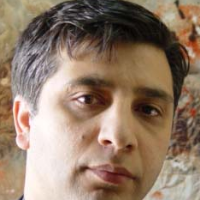Urban land use/cover mapping and change detection analysis using time series satellite images
Land use and land cover change have been among the most important perceptible changes taking place around us.Although perceptible, the magnitude, variety and the spatial variability of the changes taking place has made the quantification and assessment of land use and land cover changes a challenge to scientists. Furthermore, since most of the land use and land cover changes are directly influenced by human activities, they rarely follow standard ecological theories. The Remote Sensing and Geographic Information System has proved to be very important in assessing and analyzing land use and land cover changes. Satellite-based Remote Sensing, by virtue of its ability to provide synoptic information of land use and land cover at a particular time and location, has revolutionized the study of land use and land cover change. The temporal information on land use and land cover helps identify the areas of change in a region. The use of Geoinformatics has enabled us to assign spatial connotations to land use land cover changes, namely,population pressure, climate, terrain, etc which drive these changes. This has helped scientists to quantify these tools and to predict various scenarios. The purpose of this paper is to detect and evaluate land use and land cover changes (LULCC) of Khanaqin urban area over 20 years using remote sensing techniques and Landsat dataset for years 2000, 2010, and 2020. For this purpose supervised classification algorithm and maximum likelihood method has been used. Results show that Water lands, Built-up area, and Vegetation areas increased from 2000 to 2020 in the last 20 years while Barren lands, and Agricultural mixed lands had decreased. According to the analysis and results obtained, this research can be useful in the field of regional and environmental management in the city of Khanaqin and in the field of urban planning and management and research decisions in this region can be used
-
Spatial Analysis of PM2.5 and Its Statistical Correlation with Meteorological Parameters in Tehran
*, Vahid Kakapour, Hossein Fekrat, Maryam Sadeghi
Environment and Development Journal, -
Assessing Spatio-Temporal Changes in the Ecological Livability Index (Case Study: Tabriz Metropolis )
Sajjad Moshiri, Ahmad Nikdel Monavvar, Mohammadreza Jebraily, Iraj Teimouri *, , Bakhtiar Feizizadeh
spatial planing, -
Mapping of sustainability of Tourism products potentials by Applying GIS- Decision Making Systems in Tabriz city, Iran
*, Khatere Abdi Daylari, Taha Imanzadeh
Journal of Remote Sensing and GIS Applications in Environmental Sciences, -
Spatial analysis of micro-climate regions in central Iran using statistical techniques
Ali Mohammad Khorshid *, Saeid Jahanbakhsh Asl, , Farahnaz Khoramabadi
Journal of Climate Change and Climate Disaster,


